Where To Detect
Once you have bought, borrowed – or perhaps been lucky enough to have been given a metal detector as a Christmas or birthday gift – the next consideration concerns where you can use it.
The information in this chapter will, hopefully, provide you with some idea of the places worth searching, how to find them, and (most importantly) how to seek search permission.
Gardens
The first place you will obviously try is your own garden, if only to see how your detector works. If you live in a fairly modern house, you need to bear in mind that it was once a building site and you will, without a doubt, find a plethora of associated junk. By this I mean such things as nails, rusty metal, silver paper and cigarette cartons.
If you live in an older house, or know somebody who does and is willing to let you search their garden, you stand a reasonably good chance of making some interesting finds. Many people have lost rings or other items of jewellery in their own gardens. I was once asked to come and search the grounds of a large country house after the owner lost a valuable signet ring while playing badminton on the lawn.
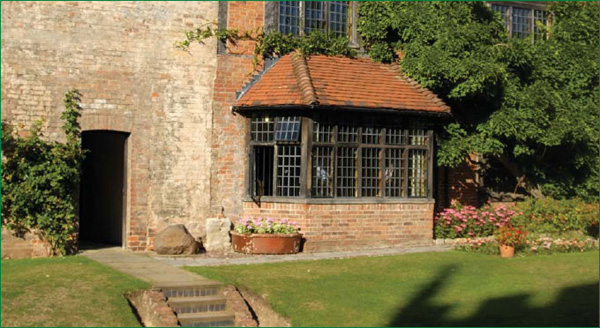
Of course, the older the house the greater chance you have of finding something of historical interest. I once asked permission to search the grounds of a large house that dated back to the 17th century. On the lawn at the back of the house I unearthed a beautifully ornate trigger guard from a flintlock pistol, which was contemporary with the house. I gave this to the owner, who was very pleased with it.
If you are friendly with your local vicar then it is always worth trying to seek permission to search the grounds of the local rectory. Many tea parties would have been held in the gardens offering the chances of making some interesting finds.
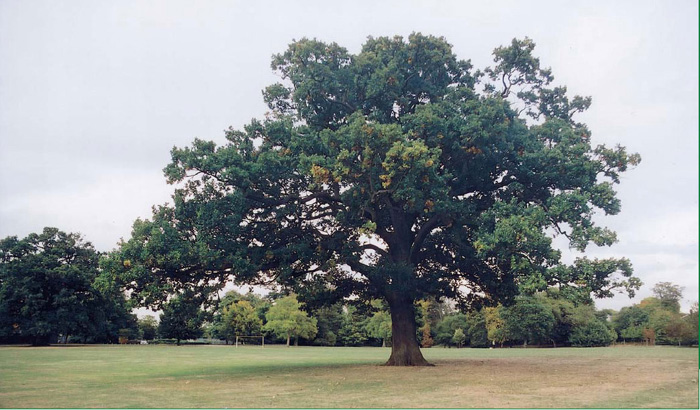
Fig. 1. Over 40 coins dating from the George III period were found under this old oak tree on parkland.
Parks & Commons
If no restrictions on the use of metal detectors exist (check the local bye-laws) then parks and commons can offer a good chance of making some interesting finds. The age of the park, or common, will reflect the type of finds you can expect to make. Don’t be put off by parkland that is surrounded by modern development; always remember that it was probably farmland at one time.
If there are any very old trees in the park then search around them; people will have sat or even picnicked under them at some time in the past. The large oak tree featured in Fig. 1. is situated in a park surrounded by modern development. When I searched around it some years ago I found over 40 coins dating from George III to the modern day. Under another tree, some 50 yards away, I found a large, chunky-linked gold bracelet worth several hundred pounds.
You will undoubtedly find masses of silver paper and pull-tabs but with careful use of discrimination, or “notch”, much of this can be eliminated.
We know of one detectorist who found 15 gold wedding bands in the grassy soil in front of some children’s swings. Presumably as mums and dads pushed their children in cold weather the rings caught in clothing or the swing structure when loose. Departing they hit the ground bounced forward and into the grass. The good thing is five of these rings were inscribed and their very grateful owners were able to be traced.
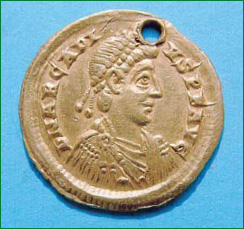
Fig. 2. This 5th century Roman gold solidus was found under bushes on a common.
Commons are usually very old; many of them were used hundreds of years ago by villagers to graze livestock. In the past some spectacular finds have been made on them. One common in particular, near where I live, yielded a hoard of coins dating from the Civil War. When I searched it for the first time in 1986 I found the Roman gold coin shown in Fig. 2. under some bushes! Again, it is always wise to check the by-laws before attempting to detect on commons.
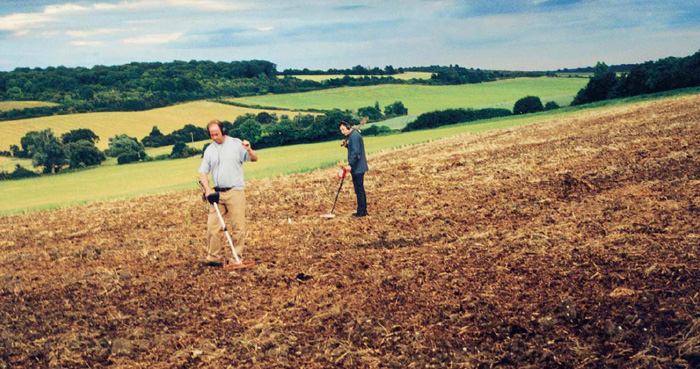
Fig. 3. Julian and friend Jeff work a ploughed hillside.
Ploughed Fields
Ploughed fields generally offer the greatest prospects for making good finds and are the most favoured sites for any detectorist. This is mainly because they are continuously being turned over, bringing new finds to the surface. The only drawback to these sites is the damage caused to many finds by farm machinery and long-term exposure to agro-chemicals.
This doesn’t mean that you won’t find anything in good condition, however. As an example take the Roman brooch in Fig. 4., which was found on plough-soil and is in remarkably good condition.
To give you the basics of which ploughed fields are best to search would take a whole volume in itself. But you may improve your chances by doing plenty of research, which is covered in Chapter 4.
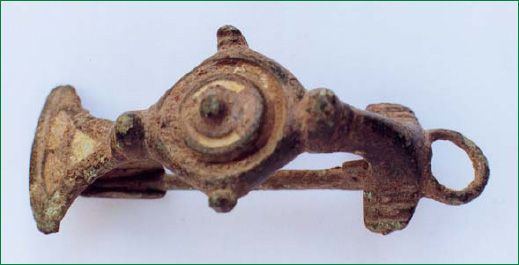
Fig. 4. Undamaged “trumpet” type brooch found on a Roman site.
Generally, any fields close to an ancient settlement will probably yield finds associated with it. Detecting near any Roman sites, for example, will almost certainly yield things such as Roman coins, brooches, tools and other implements.
Many Roman settlements or habitations were established on sites that already existed prior to the Roman occupation; this means that you could even find coins and artefacts that pre-date the Roman period. These could include coins and artefacts from both the Iron Age and, possibly, the Bronze Age.
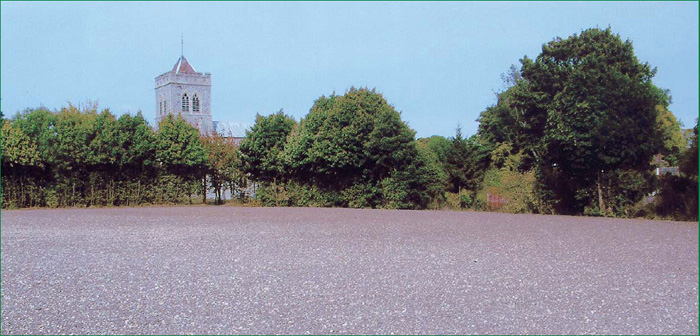
Fig. 5. Fields near old churches, such as this one, often yield many finds and are always worth searching.
It is also worth searching fields close to Roman roads. These often yield occasional Roman finds, or even hoards of coins deposited by merchants who feared attacks by bandits.
Fields close to old villages will always yield finds lost by earlier inhabitants. Prior to the Second World War, the vast majority of villagers were employed on the land and the variety of things that many of them lost will amaze you.
You will find an abundance of buttons, thimbles (for repairing clothes in the field), coins, jewellery, cutlery, pipe tampers, lead bale seals, medallions (see Fig. 6.) and, of course, harness fittings. Another common find is the crotal bell (Fig. 7.). These usually date from around the 17th-19th centuries and were used on harnesses, etc.
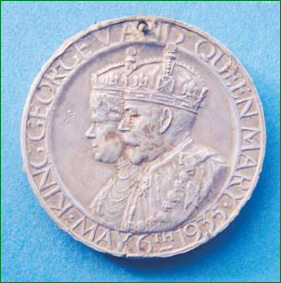
Fig. 6. “White metal” medallion to commemorate the Silver Anniversary of the reign of George V.
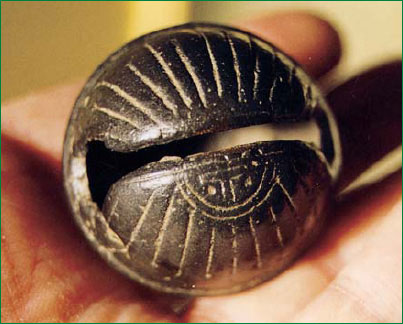
Fig. 7. Crotal bells are common finds.
Fields close or adjacent to old churches are always worth searching. Since medieval times, the church would have been the centre of activity in any village. Most modern towns and villages started out as small settlements around a church and many losses would have been made near them.
The most common find will be what is often regarded as the bane of all detectorists – the shotgun cartridge cap. Don’t be tempted to throw these back into the ground, however, as you’ll only end up digging them up again at some time in the future. It is worth noting that several of these caps might be from very rare manufacturers and that there are collectors worldwide for such items.
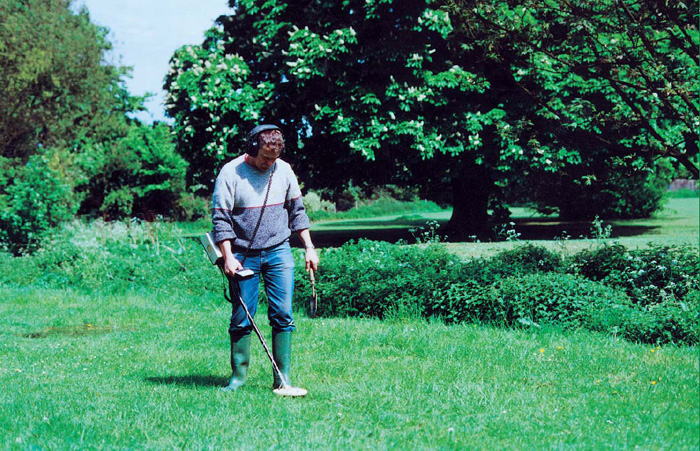
Fig. 8. Dave Stuckey searching a meadow with an old Arado 120B.
Pasture
Pasture fields probably have only two distinct advantages over ploughed fields. Firstly, unlike ploughed fields, you can search them at almost any time of the year (providing they don’t contain livestock). Secondly, due to less soil disturbance, the finds often come up in better condition.
The only real drawback to these sites, however, is that once they have been detected thoroughly they don’t yield much afterwards – unless the farmer disturbs the soil, that is. Although the previous statement is true it is time limited. The activity of earthworms and varying moisture levels will to some degree refresh such sites if they are not frequently searched. Recently we returned to some meadowland that we had intensively searched five years before. The result was that over six days we located over 400 targets including over 90 coins; this included 15 Roman coins which had never been found on this site before.
It is worth remembering that many pasture fields have at some time in their history been ploughed for one reason or another, leaving the strata in disarray. Don’t be too surprised, therefore, if you find something Roman at, say, 2 inches depth and then unearth a Victorian penny at 10 inches!
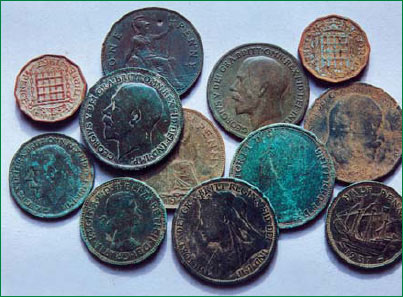
Fig. 9. These predecimal coins were all found on pasture land.
Following the same guidelines as for ploughed fields will once again improve your chances of making good finds.
Footpaths & Woodland
Detecting on footpaths and in woodland is one way of keeping yourself active during the “dormant” season (by that we mean during the summer months when ploughed fields are inaccessible due to crop growth).
Footpaths, particularly well-used ones, will undoubtedly yield coins and other objects lost by ramblers. Larger trackways and footpaths, dating back centuries, could yield more interesting finds.
One very old trackway, which we searched some years ago, yielded a gold half sovereign, Victorian coins, and a silver shoe buckle dating from the 18th century. Sadly, you will also find considerable amounts of modern refuse, such as: pull-tabs, silver paper and even drink cans, etc.
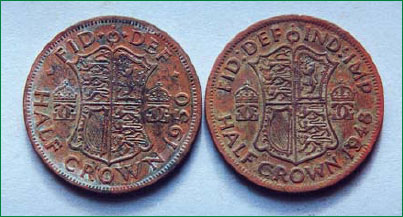
Fig. 10. Two halfcrowns found together beside a stile.They were perhaps lost by a rambler of yesteryear.
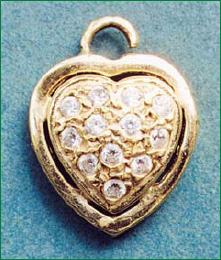
Fig. 11. A lovely gold pendant studded with white saphires. This was found on a woodland path.
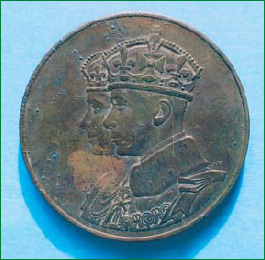
Fig. 12. Bronze medallion commemorating the visit to Canada in 1939 by George VI and Queen Elizabeth.
Stiles also present good opportunities for finds as many ramblers will have had to struggle over them, losing coins and other objects in the process. One stile, which was searched just a couple of years ago, yielded a pair of halfcrowns (Fig. 10). As I held them in my hand I imagined some rambler, four decades earlier, arriving at a country pub hoping for a thirst-quenching pint only to find that he had lost his beer money!
Woodland detecting can be frustrating at times, mainly due to the vast amount of shotgun caps that they are invariably littered with. To add to this, we have yet to find a piece of woodland that hasn’t seen action by the Home Guard, or regular soldiers on Second World War manoeuvres! If you ever attempt to search woodland you will, without a doubt, find copious amounts of expended ammunition of one type or another.
But don’t be deterred – woodlands can reveal surprising finds. Despite the bullets and shotgun cartridges you will also find coins, jewellery and just about anything mankind is capable of losing while out on a woodland walk. Fig. 12. shows a beautiful bronze medallion commemorating the visit to Canada in 1939 by George VI and Queen Elizabeth. This was found in an area of woodland where numbers of military badges and coins were also being found. No doubt it was lost by some patriotic squaddie during the war.
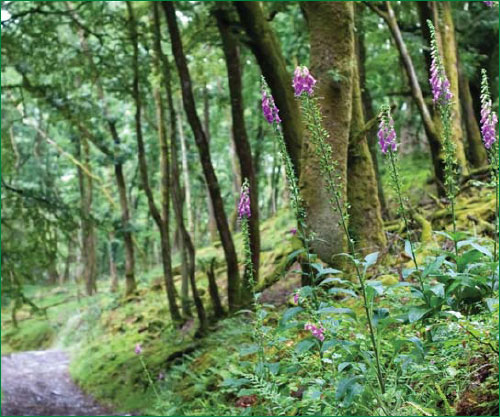
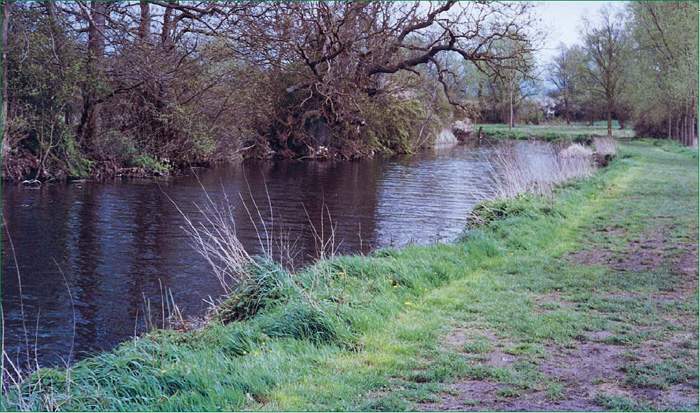
Rivers
Rivers have been the focus of activity throughout history, either as a means of transport or navigation, or simply as a convenient water supply. Large rivers, such as the Thames, have seen so much activity over the past three or four thousand years that it would be impossible to estimate what treasures lay hidden in their silt.
The Thames itself has yielded vast amounts of finds over recent decades, and most of those simply from the mud on its banks! These treasures include coins, jewellery, weapons, bottles and vases, and even a fabulous prehistoric bronze shield from the Iron Age, which is now in the British Museum.
Fields, or open spaces, beside rivers are always worth searching. You may stumble across a previously unknown ancient settlement, which could yield interesting finds, or simply losses made by travellers following its course over past centuries.
If you can find areas where the banks have eroded, try these as well – you never know what has been washed out of the soil.
Fords, particularly if they are on a Roman road alignment, could also be productive. The Romans often cast coins or other votive objects into the waters for good luck on their journeys.
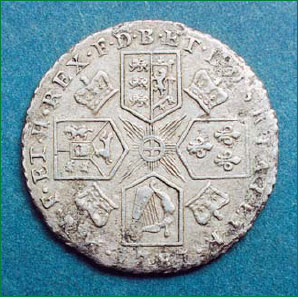
Fig. 13. This George III ”Hanoverian” shilling was found on the banks of a river.
It is probably a good idea to try these sites during the summer months when the water levels are at their lowest, or completely dried up. It is worthy of note that many Saxon and Viking battles took place near to established river crossings such as fords or bridges.
Detecting on the River Thames does require a permit, which has to be acquired from the Port of London Authority.
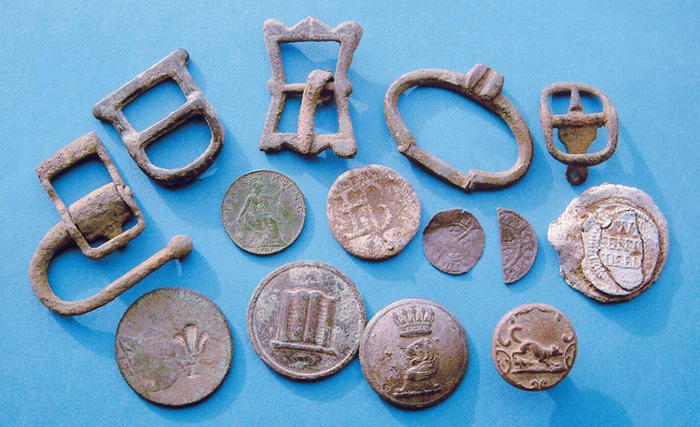
Fig. 14. This is a selection of finds made on one visit to the site of a long-disappeared windmill in Hertfordshire.
Windmill Sites
In the past the British landscape was dotted with countless numbers of windmills – some dating back to medieval times. However, over the last couple of centuries their number has dwindled dramatically. Few survive in restored condition and many of the remaining ones left standing have been converted into modern dwellings.
If you can locate the sites of demolished windmills you stand a very good chance of making a large number of excellent finds. These include coins, buckles, buttons, rings, seals, bells and many other types of objects. Fig. 14. shows a selection of finds that I made on a single visit to the site of one particular windmill near my home in Hertfordshire.
A windmill had existed on the site since medieval times but was demolished without any trace at the end of the 19th century. Fig. 15. shows a superb sword chape, dating from the 15th century, which I found on the site.
Most landowners will know of any windmill sites that exist on their land, or you may find the relevant information at your local library or Public Records Office.
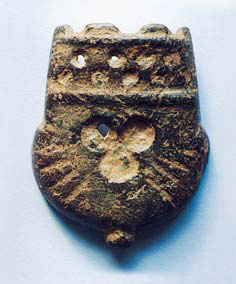
Fig. 15. 15th century “castellated” sword chape.
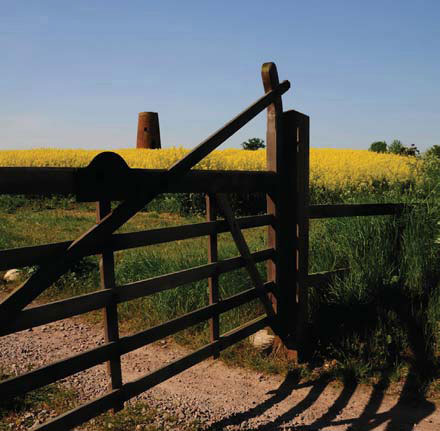
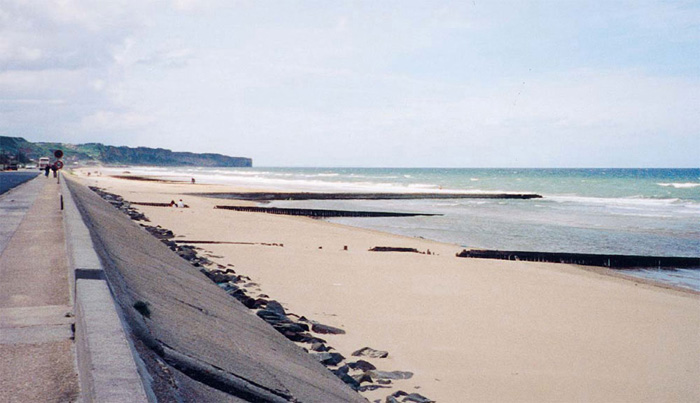
Beaches
If you are fortunate enough to live near the coast you will almost certainly want to try out your detector on the beaches. Not only are they available to detect on all year round, but they can also be very fruitful in finds, particularly if you follow a few basic tips.
Most of the jewellery losses made on beaches occur when people go swimming in the sea – their fingers contract, due to the cold temperatures, making rings very loose and liable to slip off.
Bathers also tend to lose necklaces when they do the breaststroke. Forgetting that they are wearing them, they push their arms forward and outward – breaking the chains in the process.
The tip here is that the best time to detect on a beach is when the tide is out. Start at the water’s edge then work backwards and forwards as the tide returns. Tide charts are available in many seaside resorts and are well worth obtaining.
There is no best time of the year for beach detecting, although winter storms can churn up beaches well enough to reveal long-lost jewellery and coins.
I remember on one occasion, when I was detecting on a beach near Portsmouth, being approached by a very distraught couple who begged my assistance. The lady, who had been swimming in the sea, came ashore to discover that she had lost both her wedding and engagement rings! Both rings had a joint value of several thousand pounds. Unfortunately, she had been swimming too far out and the tide didn’t recede enough for me to recover them. This was indeed a sad tale, and one that left me feeling distraught about being unable to assist. I would have given anything to have been able to relieve the lady’s anguish by retrieving the rings.
If beach detecting is going to be high on your list of search sites, then you must ensure that any machine you choose to buy is capable of searching beaches; some types of detector do not work well on wet sand.
WHERE NOT TO SEARCH
The previous suggestions are just a small selection of the kind of sites that are worth investigating with a metal detector. There are, of course, some areas where detecting is usually forbidden. These include the following.
Scheduled Sites
Scheduled sites are normally archaeological areas that have yet to be excavated. Along with Ancient Monuments and ruins, they are protected by law and should be avoided. Your local library should keep a copy of the Scheduled Monuments Record. If not, then the Archaeological Department of your County Council should be able to advise you.
Most landowners know whether any of these sites exist on their land and will deny permission to detect on them.
Sites Of Special Scientific Interest
SSSIs (or Sites of Special Scientific Interest) are usually conservation areas that have been set up in order to protect wildlife and plant life. Again, there are laws protecting these sites and detecting is usually out of the question. Recently, however, there have been several cases whereby if it can be highlighted that the investigation will uncover important archaeological remains permission might be granted, subject to strict regulations and observances.